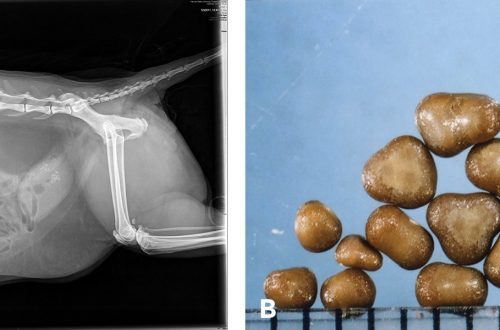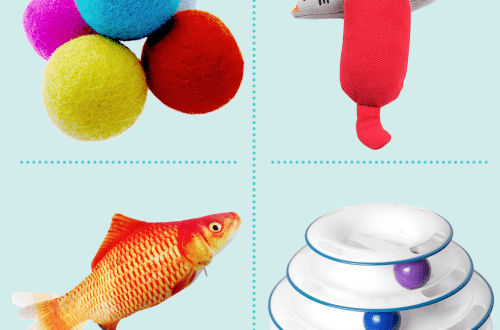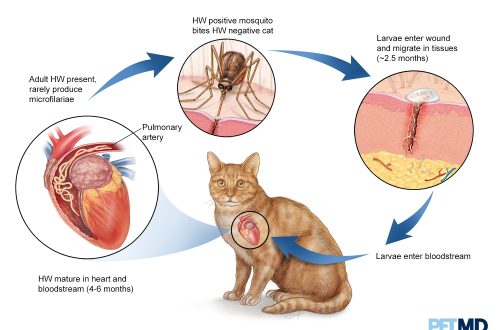
How to care for a cat’s coat: a complete FAQ
Read the answers to the most popular questions about shedding, combing and bathing cats in one article.
Contents
- Is it normal for a cat to shed its hair?
- Do cats shed twice a year?
- Why do some domestic cats shed more than twice a year?
- Does your cat shed evenly?
- Why does one of my cats shed a lot, while the other hardly sheds?
- What factors affect shedding?
- Does age affect shedding?
- How long does a molt last?
- How to distinguish a natural molt from another problem?
- How does nutrition affect moulting?
- Is it possible to brush a cat once a year to “pink skin” so that it does not shed?
- Do cats need to be shorn?
- Is it possible to cut a cat’s hair if it sheds? Will this help reduce shedding hair?
- Do you need to brush your cat? Doesn’t she wash herself?
- What tools are needed for combing?
- Can dry hair be brushed?
- How often should a cat be brushed?
- How to properly brush a cat?
- Should I brush my tail?
- Do I need to use Furminator and how to use it correctly?
- Why comb out the tangles? They can fall out on their own!
- Should a cat be bathed?
- How often to bathe a cat?
- What cosmetics do cats need for bathing?
- Three rules for a healthy and beautiful coat
Is it normal for a cat to shed its hair?
Shedding is a natural process that lasts for a certain time. The intensity and severity of molting depends on various factors. Some cats shed harder and longer, while others may shed almost imperceptibly.
Do cats shed twice a year?
Seasonal molting occurs 2 times a year: in autumn and spring. This process is triggered by changes in temperature and daylight hours. You may have noticed that at the beginning of spring, outdoor cats’ hair literally comes off in tatters.
But if we talk about domestic cats, everything is not so simple. Domestic cats can shed their hair all year round. For example, in short-haired (smooth-haired) cats, hair is formed in 21 days. The average coat is formed in 2,5 months, while the fluff (undercoat) remains on the comb with each combing.
It may seem to owners of domestic cats that the pet is always shedding.
Why do some domestic cats shed more than twice a year?
Seasonal molting is triggered by changes in temperature and daylight hours. As daylight increases, outdoor cats begin to shed. But with housing maintenance, other laws apply to cats. Due to artificial lighting, heating and air conditioning systems, the body of cats does not catch the change of seasons.
And it also happens that the spring and autumn molting change places. That is, in winter, in a heated apartment, a domestic cat may have a rarer coat: the body perceives this period as summer. And in the summer, when the cat is taken out to nature, the coat becomes thicker: the body “thinks” that winter has come. The seasons are shifting.
Too plentiful, prolonged molting is a reason to consult a veterinarian.
Does your cat shed evenly?
The line may be uneven. Each hair goes through its renewal cycle and falls out at its own time. The integrity of the coat during molting is preserved. It does not happen that a cat loses all its hair in one day or parts of the body remain completely hairless. If a cat has bald patches, this is an occasion to consult a veterinarian.
Old hair falls out only after a new one is formed.
Why does one of my cats shed a lot, while the other hardly sheds?
The severity and duration of molting are influenced by breed and individual qualities, as well as external conditions: environment, stress level, etc.
It is completely normal if your cat sheds more and more often than the neighbor’s cat. And vice versa.
What factors affect shedding?
breed features,
food,
climatic conditions,
conditions of detention,
grooming quality,
taking medication,
stress,
special conditions (pregnancy, feeding, rehabilitation after illness, etc.).
The cat can shed heavily after 1-2 matings. Almost all cats shed heavily after nursing their offspring.
Does age affect shedding?
At about 4 months, the kitten begins the first molt. Baby fluff gradually begins to move away. New hair appears in the area of the shoulder blades and grows in the direction from the neck to the tail and below. During this period, the kitten should be brushed regularly. At 10 months and later, depending on the breed, kittens go through another age molt. This time, the “junior” coat is replaced by a well-formed, adult one.
With age, the cat’s coat becomes more dry and prone to tangles. This is fine. An older cat’s coat needs to be groomed regularly.
How long does a molt last?
If a cat walks outside, the average molt lasts from 43 to 53 days. Hair falls out especially intensively in the first week.
How to distinguish a natural molt from another problem?
If the cat’s hair is shedding more than usual, if it becomes greasy, this may be a symptom of the initial stage of the disease. You should be alerted if the cat’s behavior changes: she begins to lick herself often, becomes restless or, conversely, apathetic. Any inflammation on the skin, scratching and sores can be symptoms of parasite infestation. With a natural molt, the cat usually does not bother anything, its behavior does not change. The skin is healthy, without damage, and there are no bald patches on the body.
If you are unsure if your cat is actually shedding, check with your veterinarian.
How does nutrition affect moulting?
In order for the shedding to be easy and the coat to be beautiful, the cat’s diet must be balanced and complete. The cat must receive all the elements it needs. The diet must contain omega-3 and -6 fatty acids, vitamins A, B, zinc and copper. Natural feeding cats will need special supplements – their choice should be discussed with a veterinarian.
Proper care and timely grooming helps to reduce pet shedding.
Is it possible to brush a cat once a year to “pink skin” so that it does not shed?
This procedure is called artificial molting. But one-step vyches can exacerbate the situation. If you remove almost all the hair from a cat in one procedure, you will disrupt the natural cycle of hair renewal. If you miss the moment of the next hair care, when it will need to be carefully combed, there will be much more wool in the house, and the cat will be practically “naked”.
The task of competent grooming is to remove the hairs that are already ready to leave the cat’s body, and not those that are in the growth stage. It is better to groom regularly, and not once a year.
At home, you can spend “” with the use of masks and bathing. This procedure will help reduce the amount of falling hair without harming it.
Do cats need to be shorn?
Cats are sheared only for medical reasons. Professional grooming salons and masters do not provide aesthetic haircuts for cats. Shearing disrupts thermoregulation and can degrade the quality of the coat.
Is it possible to cut a cat’s hair if it sheds? Will this help reduce shedding hair?
If you cut the long hair of a cat, you really will stop noticing the long hairs that have fallen out. But short dead hairs will continue to fall out. That is, instead of long hair, the cat will fall out “bristles”.
Short hairs are almost invisible. But we breathe them in with the air, and small children easily lick them off their hands.
Do you need to brush your cat? Doesn’t she wash herself?
Cats are indeed clean by nature, but they will not be able to thoroughly clean long and medium hair. Dust and other contaminants collect on wool. When a cat washes, all these contaminants enter her digestive tract.
To maintain the health and beauty of the skin and coat, our help to cats is necessary.
What tools are needed for combing?
If the cat is not accustomed to grooming or does not like it very much, brushes can be used. You can start with a massage. The main thing is not just to iron the wool, but to comb it. You should be able to see the loose hair remaining on the brush.
The standard set for combing is a slicker (slicker) and a comb. The slicker is needed to take apart and comb the wool well. And the comb is to remove what is left after the slicker.
The size of the tool depends on the type of cat’s coat. For example, a comb with 3,5 cm teeth is suitable for a Maine Coon.
Can dry hair be brushed?
Before combing out, you need to remove the static, i.e. apply a special moisturizing spray for combing cats to the coat. You need to buy it at the pet store.
There are single-phase “light” sprays: they simply remove static. And there are more “heavy” ones, with additional oils in the composition. They are ideal for winter time, when the wool is overdried due to heating, it is highly electrified, it sticks to the comb. Because of this, grooming for a cat becomes unpleasant. Spray solves this problem.
How often should a cat be brushed?
On average, cats are brushed 1-2 times a week. During molting – more often.
How to properly brush a cat?
Before the procedure, you need to moisten the coat with a professional spray. You need to comb out the hair in the direction of growth. It is important to comb the coat from root to tip without damaging the skin. But if the wool is tangled, you need to unravel it starting from the tips.
Pressing hard with the instrument may cause irritation to the skin. If you are afraid of injuring your skin, for the first time, get a slicker with drops.
Combing scheme: sprayed the wool with a professional moisturizing spray – combed it with a slicker brush – combed it with a comb.
Should I brush my tail?
On the tail of a cat, exactly the same hair grows as on the whole body, so it also needs to be combed out. But you can do this a little less often, because. the hair on the tail grows back more slowly.
Do I need to use Furminator and how to use it correctly?
FURminator is a professional tool and should be used with care. It is important to remember that:
FURminator is only suitable for cats with an undercoat.
Only clean, dry hair without tangles can be combed out with FURminator.
Ideally, you should first wash your cat and dry the coat thoroughly before using the FURminator.
You need to comb out in the direction of hair growth with a frequency of 1-2 times a week, for about 10-20 minutes. Repeat after 4-6 weeks.
Why comb out the tangles? They can fall out on their own!
Over time, the mat can really fall out on its own. But until this happens, the skin under the tangle will rot. Ulcers can form on it, parasites can start. If there are a lot of tangles, it is difficult for the cat to move, because. her fur is tucked up. The cat is uncomfortable, she can be nervous and tear out tangles, severely injuring the skin.
The coils must be removed. To do this, apply a special spray or conditioner to detangle the coat (for example, Pek from Iv San Bernard) and comb it gently. If you can’t unravel, the tangles must be carefully cut off. You can do it yourself or contact a groomer.
Should a cat be bathed?
When a cat washes, dirt from its fur enters the stomach and can cause chronic diseases. To prevent this from happening, cats need to be bathed. This is not only a way to maintain a well-groomed appearance, but also health care.
How often to bathe a cat?
The dermal cell renewal cycle is 21 days, so it is recommended to wash the pet every 3-4 weeks. Cats that visit the street and hairless cats can be washed even more often, as they get dirty. In our article, we told.
What cosmetics do cats need for bathing?
Definitely professional shampoo and conditioner. In our article, we told. Means should be suitable for the cat by age and type of coat. It is advisable to choose cosmetics of the same brand, as it is combined in composition and enhances the effect.
During the molting period, it is useful to use thick nourishing shampoos and masks. They help reduce the amount of shedding hair.
Three rules for a healthy and beautiful coat
Balanced diet
Regular combing
Properly selected cosmetics.
If you have questions about the care of the coat or the condition of the cat, contact a trusted specialist. Professional grooming will help you choose the perfect care specifically for your pet, and a veterinarian will help you adjust the diet.
We wish your pets the most beautiful fur coats!





